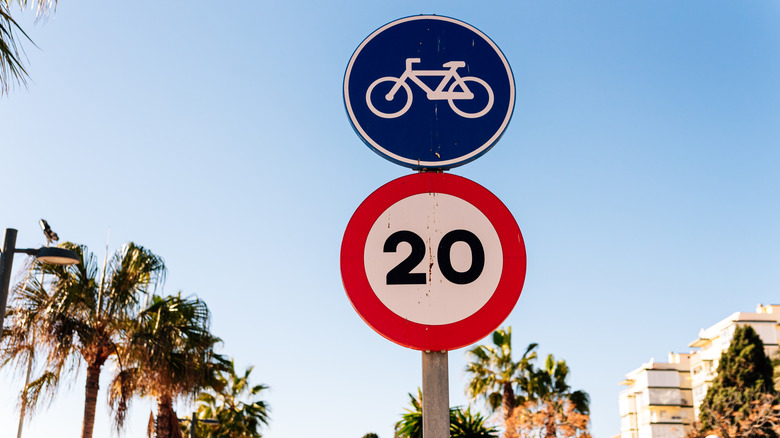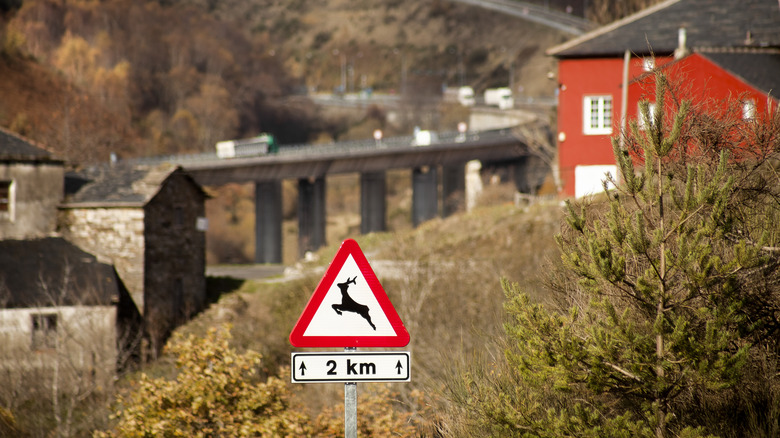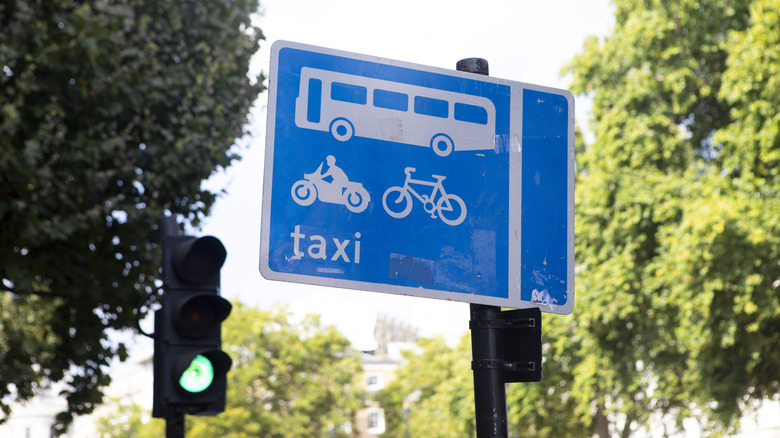
Technically, you don't need a car in Europe. Public transport is extensive, connecting cities such as London, Paris, Berlin, and Rome in a matter of hours — something the United States struggles to emulate. But even with that convenience, there's nothing quite like a European road trip. Whether darting through the pastry-punctuated French countryside or whizzing past the wonders of Tuscany, the sense of freedom is unmatched. That is, until you hit your first junction and freeze at an unfamiliar road sign.
Cue the angry Italian horns blaring behind you. Luckily, travel expert Rick Steves revealed exactly what those red and blue signs mean when you're driving in Europe.
At its core, the system is simple: "Any sign that's red usually means 'don't' — such as 'don't enter' or 'don't pass,'" Steves wrote on his website. "A blue sign typically is telling you 'do' — such as 'go right' or 'exit here.' Make educated guesses if you don't know for sure (a red sign with an exclamation mark is telling you 'be ready for anything')." Keeping this in mind can help ensure you don't wind up pulling any crazy stunts in your rental car and making a bad impression as a tourist. Of course, Europe is a big place, encompassing 44 countries by United Nations standards. The 27 nations in the European Union may have overarching rules like mandatory seatbelts, but each has its own quirks — like some French villages with upside-down road signs.
Before you head off on your next European adventure, it's a good idea to brush up a little on your signage (as well as the meaning of the 3-3-3 road trip rule). At the very least, knowing the difference between red and blue commands can help you improvise and piece together most signs on the road.
Read more: Rick Steves' Expert Tips To Not Get Pickpocketed On Your Trip To Europe
What Red Signs Mean While Driving In Europe

Broadly speaking, signs that feature a red outline indicate warnings or prohibitions. Warnings are marked by triangular-shaped signs, while rules or restrictions are shown with circular signs. There are exceptions across the continent, but this guideline applies in most places.
For example, on a motorway, a circular sign with a red outline and the number 80 in the center informs you not to travel above 80 kph and that doing so would be breaking the law. Similarly, while driving through a city, you may see a circular sign with a car symbol in the center, indicating that vehicles are not allowed in that area. You can expect to see other prohibited actions such as no overtaking, no parking, specific turn restrictions, or no U-turns appear in the same style.
The triangular red-outlined signs don't ban or prohibit things, but warns drivers of potential hazards. Some common examples include a triangle sign with a deer in the middle, suggesting animals frequently cross the road, and for drivers to remain vigilant. You would see similar signs depicting children near schools or in neighborhoods for the same reasons. More complicated ones include height or weight limits for passing under or over bridges, or a particularly steep incline on a road. One notable exception is the inverted triangle, which requires drivers to yield, or give way, in the U.K. The triangle is only upside down to prevent poor weather from making the sign unreadable.
What Blue Signs Mean While Driving In Europe

Blue signs, by contrast, opposite of red ones. Meanings vary from country to country, but they generally direct drivers to do something or provide useful information. You won't find any triangular-shaped blue signs. Instead, they appear as circular and rectangular shapes, each serving a different purpose.
Circular blue signs are typically used as commands. Where a circular red sign tells you what not to do, a blue one tells you what to do or where to go. You'll frequently see these in cities where one-way systems are popular, helping direct drivers with directional arrows. An important distinction is when a blue sign depicts pedestrians or bikes on a path or street. While these indicate who is allowed, they also signal that cars are not permitted. Less frequent, but important, are blue circular signs with a number in the center, which indicate a minimum speed rather than a maximum.
Rectangular blue signs provide information rather than warnings. They may remind or clarify rules, or note features of the road. Some will be as simple as a large "P" signaling parking availability, while others could explain complex road patterns. For example, London uses designated bus and bike lanes, which drivers could mistakenly enter. Rectangular blue signs explain these patterns, and often specify when the restrictions apply. That said, as driving in London is a bit scary, you may want to try this seven wonders of the English seaside summer road trip instead.
Ready to discover more hidden gems and expert travel tips? Subscribe to our free newsletter for access to the world's best-kept travel secrets.
Read the original article on Islands.














